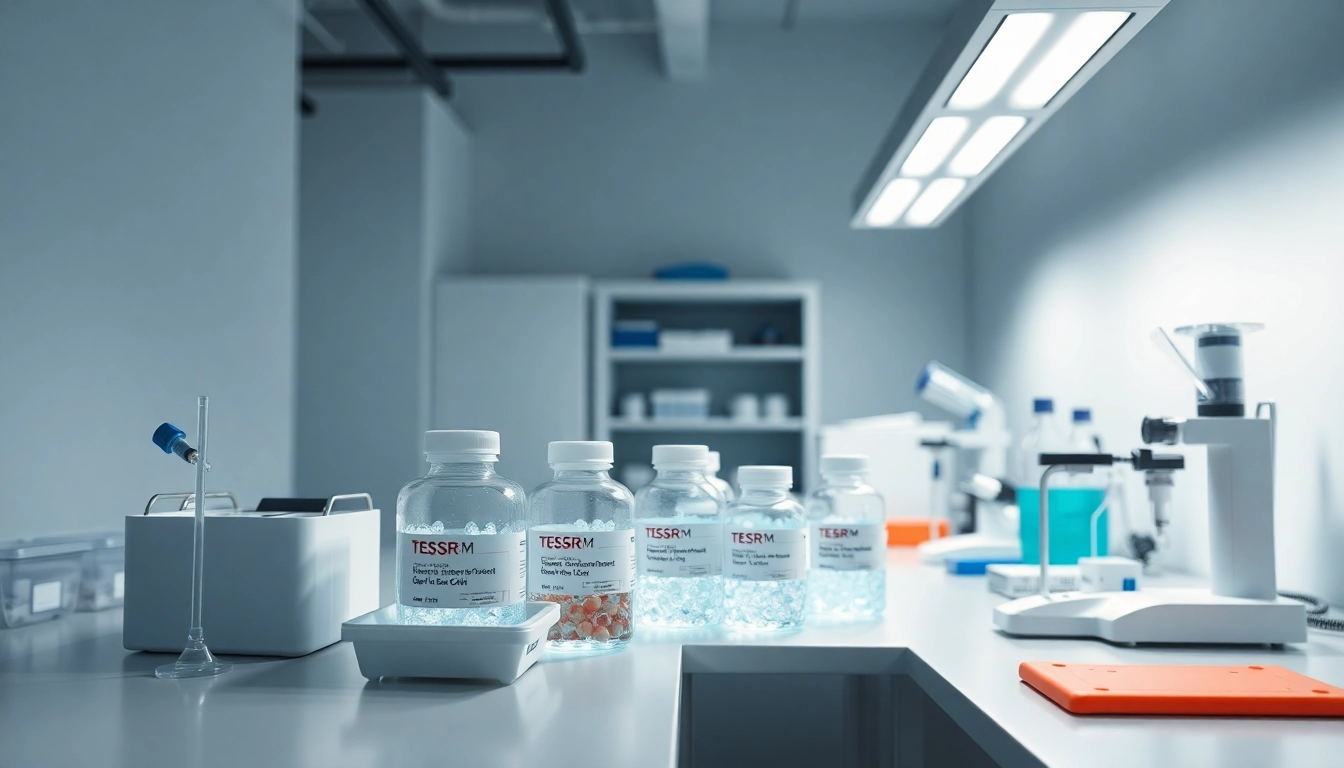Introduction to TeSR™ Culture Media
In the realm of regenerative medicine and cellular therapy, the role of all check in providing specialized culture media for pluripotent stem cells cannot be understated. TeSR™ culture media have become a standout solution for human embryonic stem (ES) and induced pluripotent stem (iPS) cell reprogramming, maintenance, and differentiation. Feeder-free systems offer researchers consistency and reliability, enabling a seamless workflow from the generation of pluripotent cells to their application in various therapeutic contexts. This article delves deeply into the various formulations of TeSR™ media, their scientific foundations, applications, and future directions in stem cell research.
What is Pluripotent Stem Cell Media?
Pluripotent stem cells are unique entities characterized by their ability to differentiate into virtually any cell type, making them crucial for a wide array of applications in regenerative medicine, drug discovery, and developmental biology. Pluripotent stem cell media are formulated specifically to support the growth and maintenance of these cells in vitro, providing a nutrient-rich environment that facilitates their undifferentiated state while allowing for the potential to be directed toward specific lineages upon differentiation.
Overview of the TeSR™ Family
The TeSR™ family of media is designed for optimal performance in supporting human pluripotent stem cell (hPSC) cultures. Initiated by the groundbreaking work of Dr. James Thomson’s lab, the TeSR™ media have evolved to include several formulations tailored to specific research needs. The original mTeSR™1 has become a landmark product widely adopted in research settings, paving the way for further innovations such as mTeSR™ Plus, TeSR™-E8™, and TeSR™-AOF, each offering distinct advantages in terms of composition and functionality.
Importance of Feeder-Free Cultures
Feeder-free cultures minimize the variability associated with the use of animal-derived feeder layers, thereby enhancing reproducibility and consistency in experimental outcomes. This development also aligns with the increasing demand for xeno-free conditions in stem cell applications. The TeSR™ media are specifically designed to foster hPSC growth in a controlled environment, promoting cell viability and pluripotency without reliance on external factors such as feeder cells. This shift toward feeder-free formats not only mitigates ethical concerns but also contributes significantly to the scalability and standardization of stem cell research.
The Science Behind TeSR™ Formulations
Key Ingredients in TeSR™ Media
Each formulation within the TeSR™ family boasts a carefully curated list of ingredients that fulfill specific roles in supporting cell culture. Key components often include:
- Basal media: Such as DMEM/F12, which provides the fundamental nutrients for cell growth.
- Growth factors: Including basic Fibroblast Growth Factor (bFGF), which plays a critical role in maintaining pluripotency.
- Serum replacements: These help in modulating the cellular environment, removing the variability associated with serum.
- Supplements: Key cytokines and small molecules that enhance growth and differentiation capabilities.
How Formulations Enhance Cell Maintenance
The meticulous design of TeSR™ media formulations ensures optimal conditions for hPSCs, including enhanced buffering capacity to stabilize pH, necessary for maintaining a healthy culture environment. For instance:
- mTeSR™ Plus features a unique formula with enhanced buffering to minimize acidification, facilitating longer intervals between medium changes.
- TeSR™-E8™ simplifies media composition by including only essential components, streamlining the maintenance process while ensuring high-quality hPSCs.
Such enhancements lead to greater cell viability, a reduction in the need for frequent media changes, and improved scalability in experimental setups.
Cytokines and Their Functions
Cytokines represent a critical aspect of cell culture, providing signaling mechanisms that dictate cell behavior. In the context of TeSR™ media, cytokines are integrated to:
- Support the maintenance of pluripotency and self-renewal.
- Facilitate controlled differentiation processes, ensuring the appropriate lineage commitment.
- Enhance cell survival and proliferation, particularly under suboptimal culture conditions.
Understanding the roles and responses of these cytokines within hPSC media can drive innovation in differentiation protocols and therapeutic applications.
Applications in Research and Clinical Settings
Using TeSR™ for Human ES and iPS Cell Reprogramming
TeSR™ media are not only foundational in maintaining pluripotent cells but also play a pivotal role in reprogramming somatic cells into induced pluripotent stem cells (iPSCs). For example, the use of ReproTeSR™ allows researchers to optimize the reprogramming of fibroblasts and other somatic cell types, creating a viable cellular platform for modeling diseases and drug testing.
Differentiation Media for Specific Cell Types
Building upon the capacity to maintain pluripotency, TeSR™ also facilitates the differentiation into specialized cell types. Various media formulations are tailored for specific lineages:
- TeSR™-E6: Optimized for mesodermal lineage differentiation, pivotal for generating cardiomyocytes and hematopoietic cells.
- TeSR™-E5: Focused on creating neural lineages crucial for neurodevelopmental research.
These tailored differentiation media ensure that researchers have the tools necessary for efficient and reproducible lineage commitment.
Success Stories from the Research Community
The impact of TeSR™ media extends well beyond theoretical use, with numerous success stories emerging from the research community:
- Institutions have reported advancements in cardiac regeneration using differentiating protocols derived from the TeSR™ media range, leading to breakthroughs in heart disease therapies.
- Studies involving the generation of disease-specific iPSCs have facilitated significant insights into various genetic disorders, allowing for precise modeling and potential treatment strategies.
Comparing TeSR™ Products: Making the Best Choice
mTeSR™ Plus vs. Other Media
In navigating the landscape of hPSC culture, understanding how mTeSR™ Plus differs from other formulations is paramount. mTeSR™ Plus offers several distinct advantages:
- It allows for extended culture durations without compromising cell quality, thanks to its enhanced buffering system.
- This formulation has been developed under current Good Manufacturing Practices (cGMP), aligning with regulatory requirements for clinical applications.
These features make mTeSR™ Plus a preferred choice for researchers aiming for both basic and translational research applications.
Market Comparison of Feeder-Free Stem Cell Media
The market for feeder-free stem cell media has seen various entrants; however, the TeSR™ family consistently stands out due to its rigorous testing, formulation stability, and comprehensive support system. Unlike competitors that might compromise on certain components to lower costs, the TeSR™ media emphasize quality, reproducibility, and researcher confidence. This is backed by extensive literature and real-world applications, establishing a solid reputation across laboratories globally.
Choosing the Right TeSR™ Media for Your Application
Identifying the appropriate TeSR™ media involves assessing specific research goals, cell types, and desired outcomes:
- For preserving pluripotency, mTeSR™ Plus is ideal.
- If differentiation into specific lineages is required, corresponding media such as TeSR™-E6 for mesoderm or TeSR™-E5 for neuroectoderm should be evaluated.
- For reprogramming efforts, options like ReproTeSR™ provide specialized support that enhances efficiency and outcomes.
By aligning media choice with specific research goals, scientists can optimize their workflows and achieve more meaningful results.
Future Directions in Stem Cell Culture
Trends Affecting Pluripotent Stem Cell Research
As stem cell research progresses, several trends are emerging that could influence the future of hPSC culture:
- Increased demand for xeno-free and chemically defined media: The scientific community is moving towards avoiding animal-derived components entirely due to ethical considerations and variabilities associated with those components.
- Integration of bioprinting technologies: The future may see a closer alignment between preparation of stem cell scaffolds and the culture medium, providing more integrated solutions for tissue engineering.
- Focus on regulatory compliance: As more therapies approach clinical application, media production will increasingly need to comply with global regulatory standards.
Innovations in Regulatory Compliance
Regulatory compliance is no longer an option but a necessity for stem cell culture media aiming for clinical applications. Upcoming innovations in the TeSR™ line will likely include:
- Enhanced documentation that supports traceability and material sourcing.
- Updated protocols that align with evolving clinical trial requirements.
These innovations will ensure that researchers can confidently transition from bench to bedside, opening doors for new therapeutic avenues.
Looking Ahead: The Next Generation of TeSR™ Media
The future of TeSR™ media promises the introduction of new formulations that will continue to push the boundaries of stem cell research:
- Potential formulations that target not just maintenance but also actively induce specialized differentiation pathways.
- Media options that integrate biomimetic conditions, providing an environment closer to natural developmental cues.
As these innovations take shape, the TeSR™ family is set to remain at the forefront of stem cell culture, empowering researchers to harness the full potential of pluripotent stem cells.



